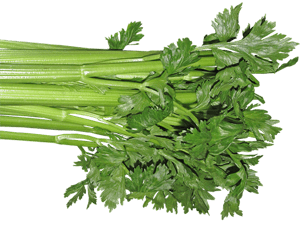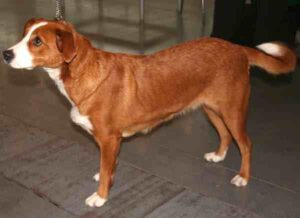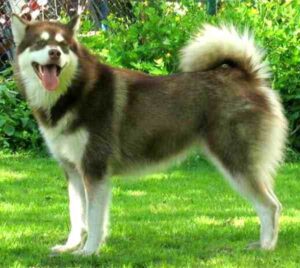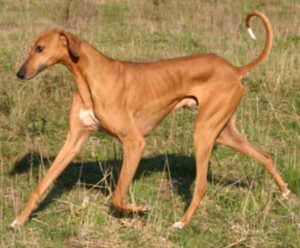The Alaskan husky dog is a sled dog which is breed for it’s working ability, not for looks or pedigree. And there are not set formula for creating these dogs. They are a mongrel, and breed specifically for their performance as a sled dog.
The Alaskan husky puppies are actually from America. In 2015, a study using a number of genetic markers indicated that the Alaskan husky, the Siberian Husky and the Alaskan Malamute share a close genetic relationship between each other and were related to Chukotka sled dogs from Siberia.
They were separate to the two Inuit dogs, the Canadian Eskimo Dog and the Greenland dog. In North America, the Siberian Husky and the Malamute both had maintained their Siberian lineage and had contributed significantly to the Alaskan husky, which showed evidence of crossing with European breeds that was consistent with this breed being created in post-colonial North America.
The modern Alaskan Husky reflects a century or more of cross-breeding with Pointers, Shepherds, and Salukis to improve their performance. The Alaskan husky dogs are occasionally referred to as Indian Dogs, because the best ones supposedly come from Native American villages in the Alaskan and Canadian interiors.
There are two genetically distinct varieties of Alaskan husky dog: a sprinting group and a long distance group. English Pointers and Salukis contributed the most to the sprinting group. While Alaskan Malamutes and Siberian Huskies contributed the most genetically to the long-distance group
Anatolian Shepherd dogs contributed a strong work ethic to both varieties. There are many Alaskan huskies that are partially Greyhound, which improves their speed.[1]
The Alaskan husky dogs are not considered as pure and they are not registered by the AKC or CKC, because they are sometimes crossed with other Northern and non-Northern dog breeds for producing the best working dogs. However, read some more information about this breed below.
Alaskan Husky Dog Characteristics
The Alaskan Husky dog is usually bred from various spitz-type dogs and has their characteristic prick ears, but in all other respects it looks vary widely. These dogs generally have short to medium length coat, which can be of any color or pattern.
They may have a wedge shaped head of a spitz breed or a face with longer muzzle. Exact height of the Alaskan Husky dog can vary from animal to animal. But they typically weigh between 18 and 34 kg.
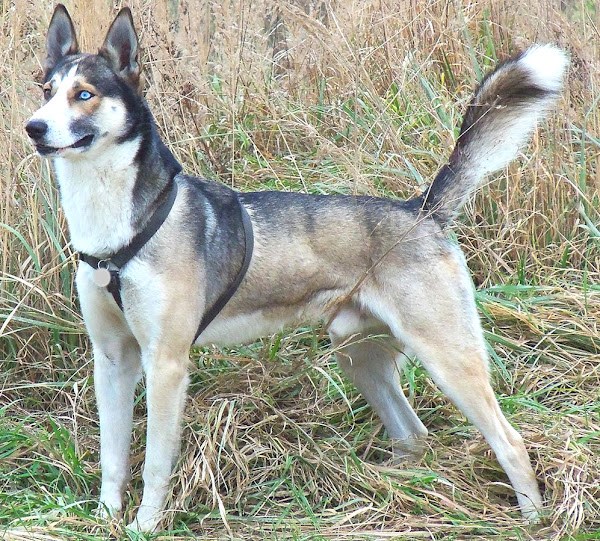
Temperament
The Alaskan Husky dogs are generally friendly. They are typically affectionate and have an instinct for snuggling, since that’s how they keep warm out on the trail with their sled mates. They get along well with people and other dogs.
They are gentle and playful and they are very fond of their family. The puppies are very clever, sociable and loving. They are easy going and docile, though they do generally have a lot of energy, especially the puppies.
The Alaskan Husky dogs are generally good with children and friendly with strangers. They are not watchdogs, so they bark little and love everyone.
They are trainable, but they have a mind of their own and will only obey a command if they see the point and if you do not display leadership. Training takes patience, consistency and an understanding of the Arctic dog character.
Lifespan
Average lifespan of the Alaskan Husky dog is between 10 and 15 years.
Feeding
How much a mature dog eats depends on it’s size, age, build, metabolism and activity level. Dogs are individuals, just like people, and they don’t all need the same amount of food. You can consult with your vet for better recommendation.
Caring
Taking good care of the Alaskan Husky dog is very important. Good caring helps them to stay healthy and happy. So, try to take good care of your dogs. These dogs are generally not recommended for apartments. Although they can live in apartments if well trained and properly exercised.
They are very active indoors and do best with a fenced large yard. They prefer cool climates, mainly because of their heavy coats. They are very easy to groom. Just brush them once or twice a week for removing the dead hair. Other grooming an Alaskan husky dog needs is regular nail trimming, ear cleaning and dental hygiene.
Health
The Alaskan Husky dogs are generally healthy. But it’s important to maintain a good care and regular vet checkups. Some of the more common health problems that the Alaskan husky dogs suffer from are eye problems, lysosomal storage disease, hypothyroidism, malformation of the lyrynx causing wheezing sound when breathing. Always keep good contact with a vet in your area.
| Breed Name | Alaskan Husky |
| Other Names | None |
| Breed Size | Large |
| Height | Varies |
| Weight | Between 18 and 34 kg |
| Good as pets | Yes |
| Climate Tolerance | Cool climates |
| Color | Many |
| Lifespan | 10 to 15 years |
| Good for children | Yes |
| Rarity | Common |
| Country of Origin | United States |

